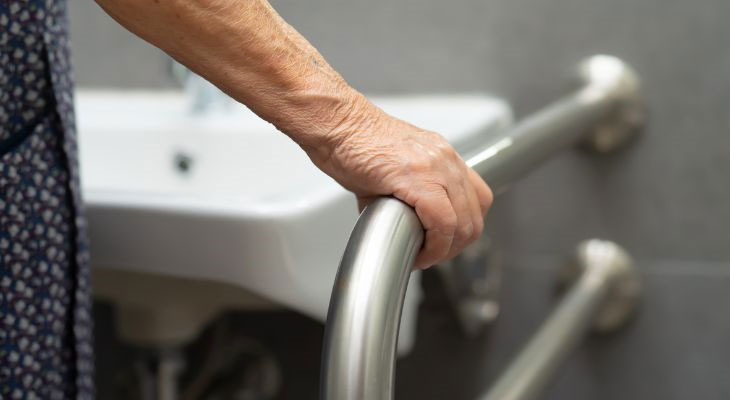
Commonly Overlooked ADA Bathroom Requirements
Mandatory Water Closet Configurations
Regarding the proper measurements for an ADA-compliant water closet, you must ensure your toilet's seat rests 17"-19" above the ground and 16"-18" from both partitions or sidewalls. Disability stalls must be large enough to accommodate wheelchairs and side approaches to the toilet. Also, side wall grab bars (42" wide) and rear wall grab bars (36" wide) are mandatory in every water closet-some regions also mandate an 18" vertical grab bar.
Compliant Hand Washing & Drying Fixtures
According to the ADA, all hand washing and drying fixtures cannot require an inaccessible amount of manipulation to operate. Basically, building occupants of all physical abilities should comfortably be able to wash and dry their hands without excessive twisting or straining. Therefore, your sink faucets, hand dryers, and paper towel dispensers cannot feature hard-to-use mechanical elements like complicated levers. Instead, consider implementing fully automated commercial washroom accessories throughout your facility to accommodate every potential patron.
Conditional: ADA Shower Requirements
Not all commercial restrooms feature shower fixtures, but those that do must maintain facilities with certain specifications. Roll-in and transfer showers are ADA-compliant, provided they include accessible controls, grab bars, and emergency recovery systems like SOS call buttons, levers, etc. Additionally, all ADA-compliant showers must feature a mounted seat 17"-19" above the ground with a maximum weight capacity of 250 lbs. Finally, the ADA recommends shower-curtain enclosures over hinged doors, as these configurations are more wheelchair and mobility equipment friendly.
Financial Assistance for Bathroom Upgrades
Financial assistance for making ADA-compliant bathroom upgrades is certainly not a requirement, but rather an overlooked resource that more businesses should consider when conducting their own renovations. Two types of financial assistance directly benefit ADA compliance construction projects-the Disabled Access Credit and the Barrier Removal Tax Deduction.
Disabled Access Credit (IRC 44)
Does your business have 30 or fewer employees and annual revenues under $1 million? If so, your small company is eligible for the Disabled Access Credit (up to $5,000) on ADA compliance-related purchases. This credit can cover the costs for:
- Modifying accessible equipment
- Updating accessible printed materials
- Removing potential barriers
- Providing accessibility assistance and services
Barrier Removal Tax Deduction (IRC 190)
The Barrier Removal Tax Deduction is available for businesses of all sizes. This tax credit deducts up to $15,000 annually for expenses related to barrier removal or disability services. Additionally, small businesses that qualify for the Disabled Access Credit can also utilize the Barrier Removal Tax Deduction for maximum savings. These tax credits help motivate commercial buildings to do the responsible thing and provide highly accessible bathroom environments for all occupants.


